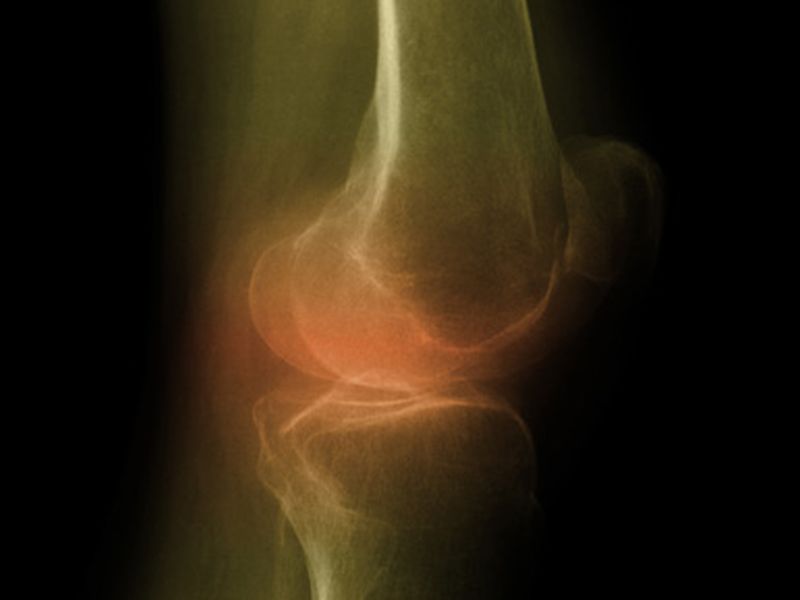TUESDAY, May 23, 2017 (HealthDay News) — Fiber helps lower cholesterol, stabilize blood sugar levels and keep the bowels running smoothly, but a new study suggests it can also reduce knee pain from arthritis.
Researchers found that people who ate the most fiber reported reduced osteoarthritis knee pain by up to 60 percent. However, X-rays did not show any difference in their knees compared to those who consumed less fiber.
A second study looked at the effects of the dietary supplement chondroitin on knee pain. That study — sponsored by a maker of the supplements — found that taking chondroitin daily was linked to less knee pain and improved function.
But at least two bone specialists noted that the potent type of chondroitin used in the study probably isn’t available in the United States, and the safety of long-term daily use of the supplement is unknown.
Both studies were published online May 23 in the Annals of the Rheumatic Diseases.
“With both of these studies, the danger is that people are thinking they’re making a change in their arthritis, but they may only be masking the pain. Neither study has proven a change in the natural history of osteoarthritis,” explained Dr. Victor Khabie, who was not involved with the studies. He is co-director of the Orthopedic and Spine Institute at Northern Westchester Hospital, in Mount Kisco, N.Y.
Fiber is found in fruits, vegetables, nuts and whole grains. It helps to make people feel full and reduce calorie intake. Fiber is also believed to reduce inflammation, the researchers said.
The fiber study looked at data from two other studies. One included nearly 5,000 people who had or were at risk of osteoarthritis. Their health has been monitored since at least 2006, when their average age was 61.
The second set of data came from the Framingham Offspring study, and included just over 1,200 people. That study began in 1971, and includes data from 1993 to 1994, when the average age of participants was 54. They were followed until 2002-2005.
In the first group, median fiber intake ranged from 21 grams a day to 9 grams a day. In the Framingham group, the highest group ate a median of 26 grams daily. The lowest group had nearly 14 grams daily.
People who ate the most fiber were at lower risk of developing osteoarthritis knee pain, the study found. For those in the first group who ate the most fiber, the risk went down by 30 percent. For those in the Framingham group who ate the most fiber, the risk was 61 percent less than those who ate the least fiber.
The researchers also found that people who ate more fiber were less likely to have worsening knee pain.
Lead researcher Zhaoli Dai, a postdoctoral researcher at Boston University, said, “There is a strong link among obesity, inflammation and painful knee osteoarthritis. We speculate that eating more fiber increases satiety and therefore reduces total caloric intake and reduces body weight.”
But Dai added that because the study is an observational one, it can’t prove a cause-and-effect relationship.
Dr. Matthew Hepinstall is associate director of the Lenox Hill Hospital Center for Joint Preservation & Reconstruction in New York City.
He agreed that the study cannot prove a causal relationship.
“Nevertheless, when combined with recently published data suggesting lower rates of osteoarthritis progression in patients who lose weight — also only an association — a picture is emerging that healthy lifestyles may have measurable effects on the risk of progressive osteoarthritis pain,” Hepinstall said.
But he noted that plenty of people who maintain healthy and active lifestyles also develop painful osteoarthritis. So, Hepinstall added that “a high-fiber diet should not be seen as a proven strategy for preventing arthritis.”
Dai said: “As the average intake of fiber is about 15 grams per day among Americans. This amount is way below the recommended nutritional goal according to the Dietary Guidelines for Americans 2015-2020, which recommends 22.4 grams/day for women and 28 grams/day for men aged 51 years and above.”
According to the Dietary Guidelines for Americans 2015-2020, a usual serving of high-fiber cereal contains 9 or more grams of fiber. A cup of navy beans provides nearly 10 grams, and an apple has about 5 grams of fiber.
The second study looked at chondroitin sulfate. It’s a chemical found naturally in the cartilage of the knee, according to the U.S. National Library of Medicine.
The study included more than 600 people from five European countries who had been diagnosed with knee osteoarthritis. The patients were randomly assigned to one of three treatment groups.
One group was given 800 milligrams (mg) of “pharmaceutical grade” chondroitin daily and one placebo pill to mimic 200 mg of the pain reliever celecoxib (Celebrex). Another group was given a 200-mg celecoxib pill and a placebo to mimic the chondroitin pill. The third group was given two placebo pills.
The study lasted six months. Doctors assessed the study participants at one, three and six months.
Reductions in pain and improvements in joint function were greater in people treated with chondroitin or celecoxib at three and six months. The researchers said that chondroitin provided similar relief to celecoxib.
Khabie said, “It looks like there’s an anti-inflammatory or pain-relieving effect when chondroitin is taken in a very purified, very well-controlled state, but that’s probably not what’s available off-the-shelf [in the United States].” He noted that chondroitin is a supplement, and in the United States supplements aren’t regulated in the same way that drugs are.
Khabie also said that the safety of taking chondroitin long-term isn’t known.
Hepinstall echoed Khabie’s concerns about the chondroitin study, but also said chondroitin might be “particularly well-suited for patients who cannot take NSAID medications.” NSAIDs, or non-steroidal anti-inflammatory drugs, include ibuprofen (Motrin, Advil), naproxen (Aleve) and aspirin.
More information
Learn more about arthritis in the knee from the American Academy of Orthopaedic Surgeons.
Copyright © 2025 HealthDay. All rights reserved.

